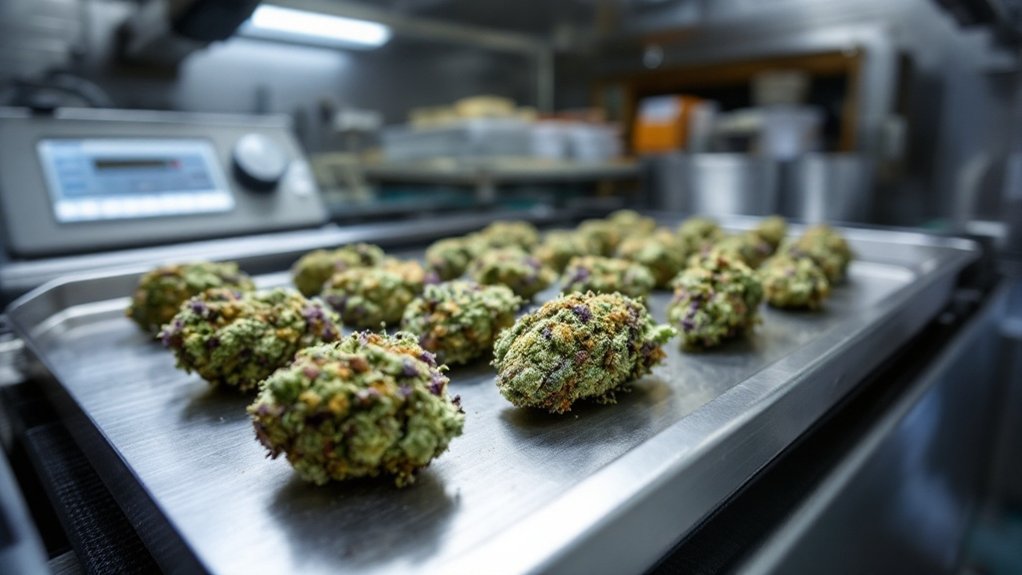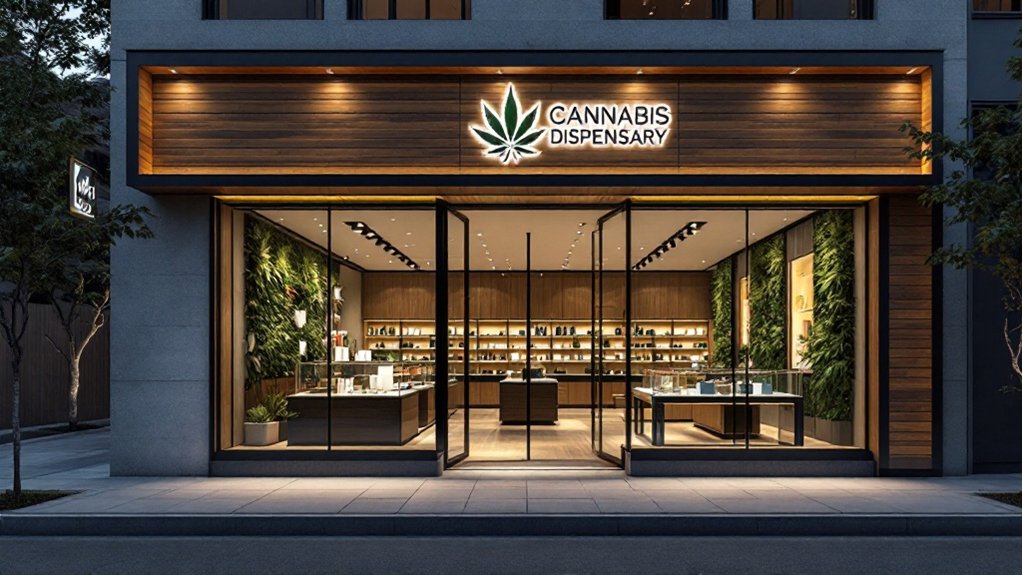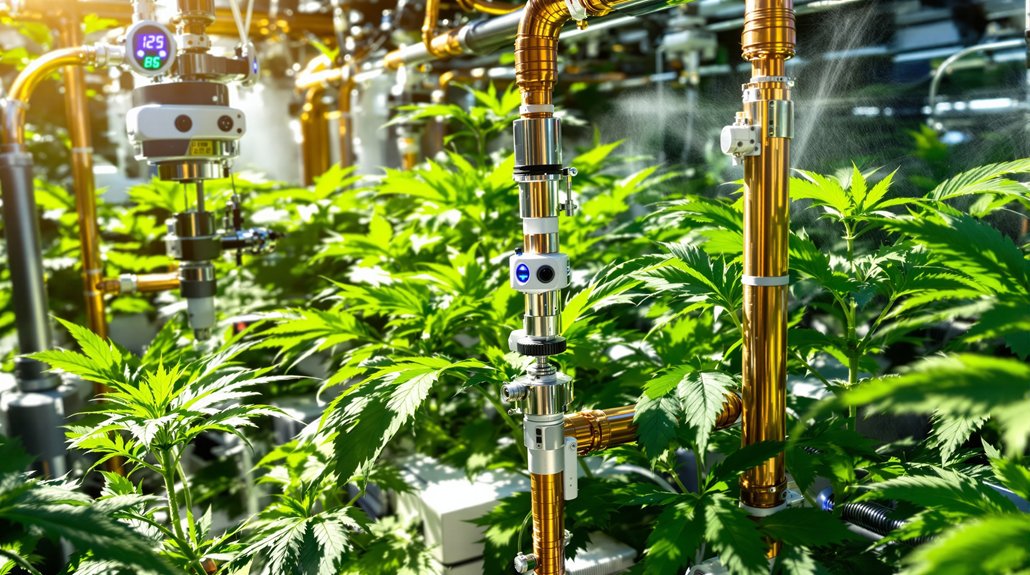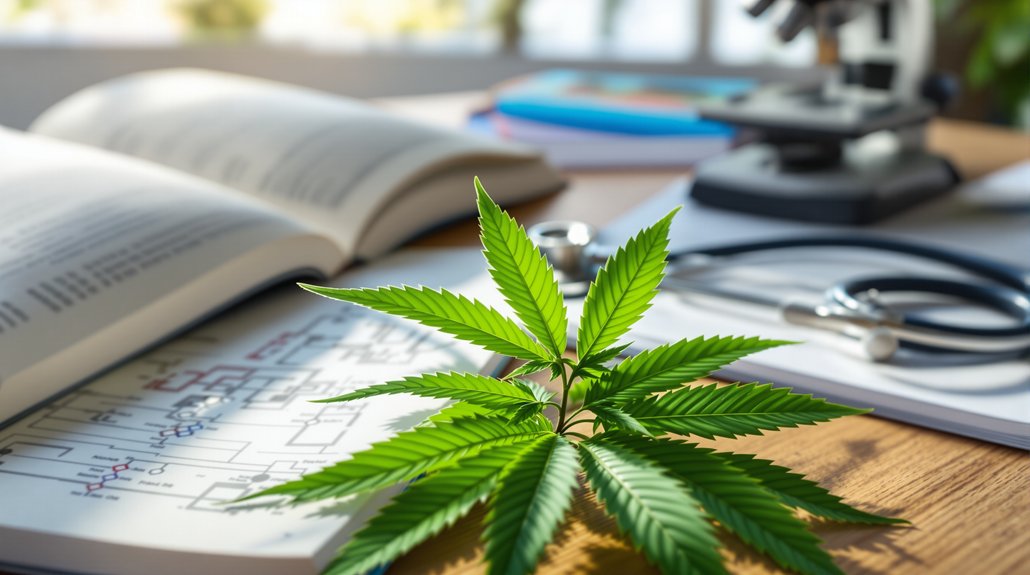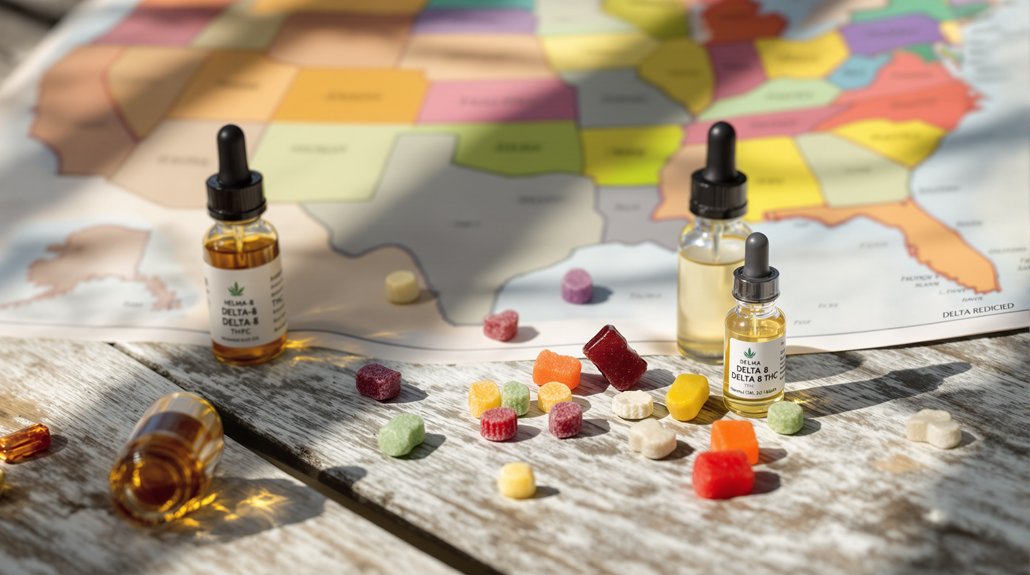Freeze-drying cannabis requires evenly spacing fresh plant material on trays before rapid freezing below -40°F. The three-stage process—freezing, primary drying, and secondary drying—takes 24-36 hours under vacuum conditions, preserving valuable terpenes and cannabinoids. After processing, handle the brittle trichomes carefully and package immediately to prevent moisture reabsorption. This method maintains structural integrity while achieving ideal 1-4% moisture content, greatly extending shelf life. Proper technique guarantees premium quality preservation throughout the entire curing process.
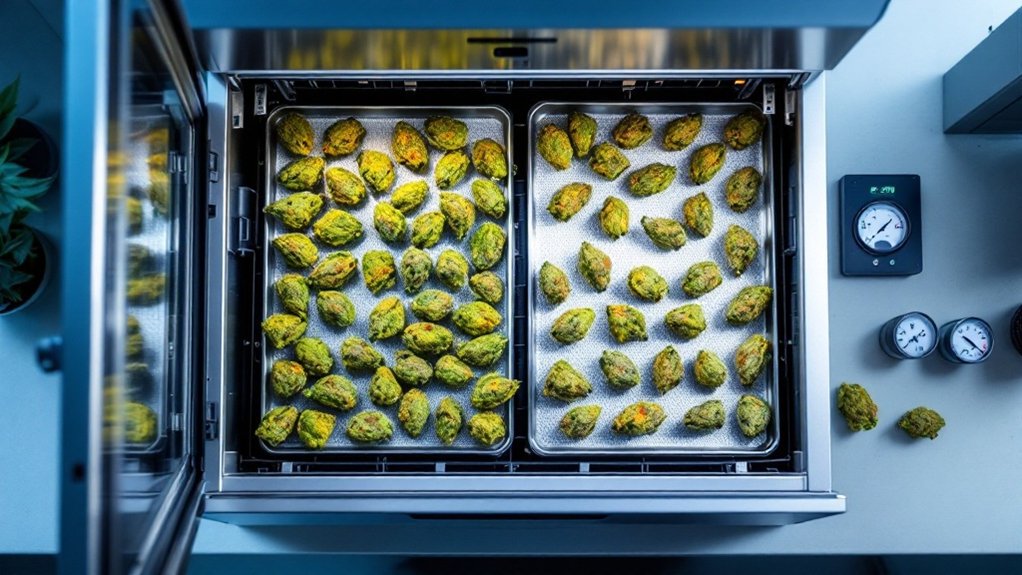
Mastering the art of freeze-drying cannabis represents a significant advancement in preservation techniques for cultivators seeking ideal potency retention. The freeze-drying process, also known as lyophilization, crystallizes water at low temperatures and removes it through sublimation, preserving cannabis at peak freshness for extended periods. This method maintains product integrity with less physical damage, resulting in a final product containing between 1% to 4% moisture content, comparable to traditional curing methods.
The freeze-drying process consists of three primary stages: freezing, primary drying, and secondary drying. The freezing stage is considered most vital, requiring temperatures below -40°F to prevent the formation of large ice crystals that could damage trichome structures. Primary drying, or sublimation, removes approximately 95% of moisture as material shifts directly from ice to vapor without passing through a liquid phase. Secondary drying, known as desorption, eliminates remaining water molecules from the cannabis buds. Modern freeze-drying technology can retain up to 97% of cannabinoids including THC, CBD, and other valuable compounds. The entire process typically requires 24-36 hours under deep vacuum conditions.
Freshness of cannabis material proves essential for peak freeze-drying results. Harvested plants should be quickly prepared to preserve valuable terpenes and cannabinoids, with careful timing of facility workflow preceding the freeze-drying process. Proper preparation guarantees even drying, while overcrowding can lead to uneven sublimation and compromised quality. Rapid freezing is critical for maintaining structural integrity of the plant’s trichomes. Compared to traditional methods, freeze-drying provides a remarkable quick turnaround time of just 24 to 48 hours.
When operating freeze-drying equipment, cannabis should be evenly spaced on trays to allow uniform drying. Modern freeze dryers offer programmable settings specifically designed for cannabis processing cycles. During sublimation, pressure is lowered while temperature gradually increases, requiring careful monitoring to prevent “overcooking” and subsequent damage to the product.
Post-processing demands immediate removal from the dryer once the cycle completes, followed by careful handling as dried trichomes become brittle. Exposure to air can quickly lead to moisture reabsorption, potentially undermining the preservation benefits. After freeze-drying, material can be trimmed, further cured, and properly packaged.
The global legal marijuana market, valued at $30.2 billion in 2024 with an expected 19.4% CAGR by 2035, increasingly embraces freeze-drying technology for its efficiency and preservation capabilities. This method offers significant advantages for commercial operations, enabling easier transportation while maintaining the cannabis product’s essential qualities throughout its shelf life.
Frequently Asked Questions
Does Freeze-Drying Affect Cannabis Potency?
Freeze-drying cannabis effectively preserves potency by maintaining cannabinoid content better than other drying methods.
The process prevents decarboxylation of acid cannabinoids like THCa and CBDa, which offer anti-inflammatory benefits. While freeze-drying retains the original psychoactive and therapeutic components, it does lead to some loss of volatile organic compounds responsible for aroma.
The preservation of cannabinoids in their acidic form contributes to serotonin production while maintaining the plant’s therapeutic properties.
Can I Freeze Dry Cannabis Without Special Equipment?
Cannabis can be freeze-dried without specialized equipment using several household methods.
The freezer method involves placing cannabis in a single layer in a standard freezer for several weeks, allowing sublimation to occur naturally.
Alternatively, the dry ice method accelerates this process by creating extremely low temperatures, reducing drying time to 24-48 hours.
A DIY vacuum chamber setup offers more efficiency by mimicking commercial freeze-dryers, though it requires some investment in vacuum equipment.
Each approach preserves cannabinoids and terpenes better than conventional warm-drying techniques.
How Long Does Freeze-Dried Cannabis Last?
Properly freeze-dried cannabis maintains quality considerably longer than conventionally cured products.
When stored correctly in vacuum-sealed containers, freeze-dried cannabis can last between 1-2 years while retaining up to 95% of its terpene profile and cannabinoid potency.
The preservation timeframe extends to several years under ideal conditions with minimal exposure to light, heat, and oxygen.
Storage temperature and packaging integrity directly influence long-term stability, with cold, dark environments yielding the longest shelf life.
Will Freeze-Drying Preserve Terpenes Better Than Traditional Curing?
Freeze-drying preserves terpenes considerably better than traditional curing methods, maintaining up to 68.3% of these volatile compounds.
The rapid 24-48 hour process minimizes terpene degradation through sublimation, which removes moisture without exposing sensitive compounds to damaging temperatures.
Traditional drying takes 2-6 weeks, allowing extended exposure to oxygen and environmental factors that accelerate terpene evaporation.
The reduced processing time and controlled environment of freeze-drying create superior terpene retention, resulting in enhanced flavor profiles and therapeutic potency.
Can Freeze-Dried Cannabis Be Rehydrated for Smoking?
Freeze-dried cannabis can indeed be rehydrated for smoking. The process involves placing the dried material in an airtight container with humidity packs or alongside a damp cloth without direct contact.
This controlled rehydration restores moisture content, improving smoking quality by delivering smoother hits and better flavor expression. Proper rehydration must be monitored carefully to prevent mold growth or excessive moisture absorption, which could compromise product integrity.
When done correctly, rehydrated freeze-dried cannabis can match the smoking experience of traditionally cured product.
